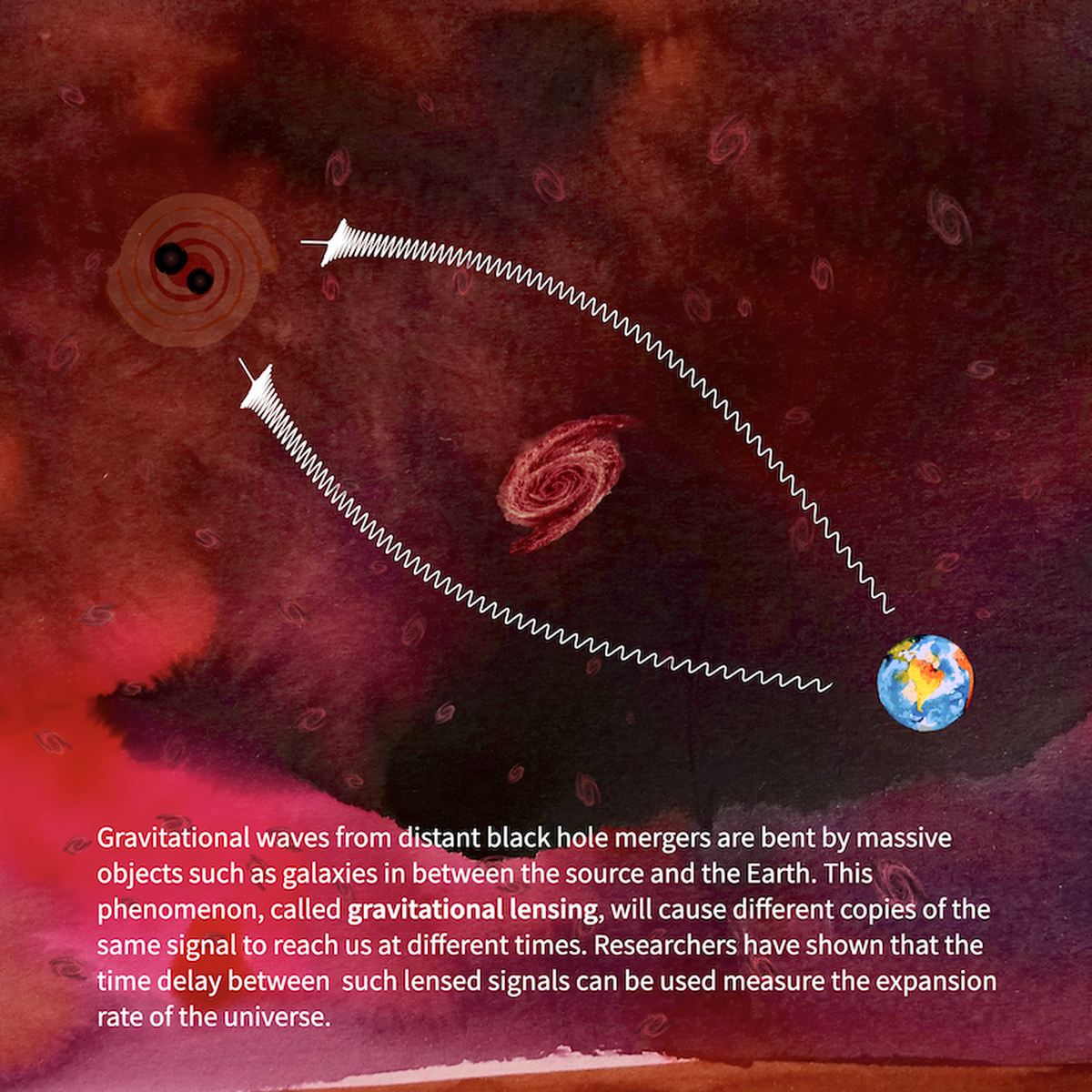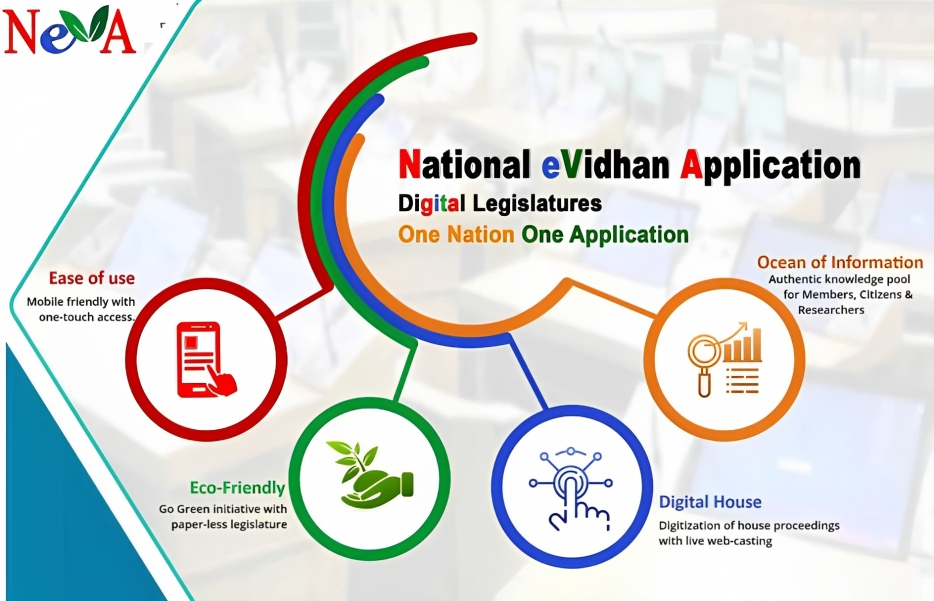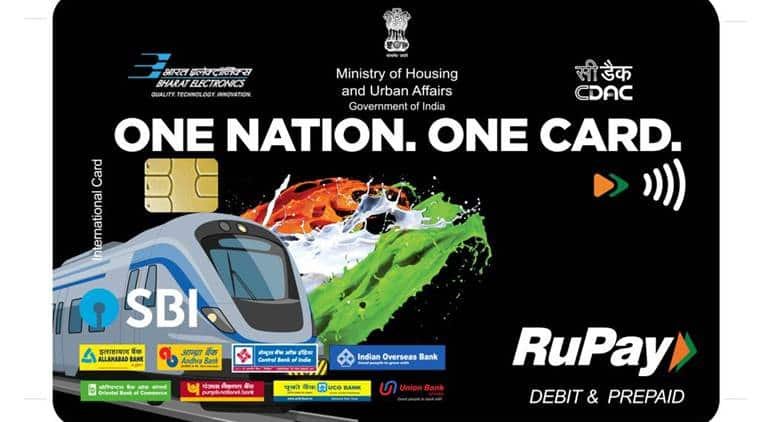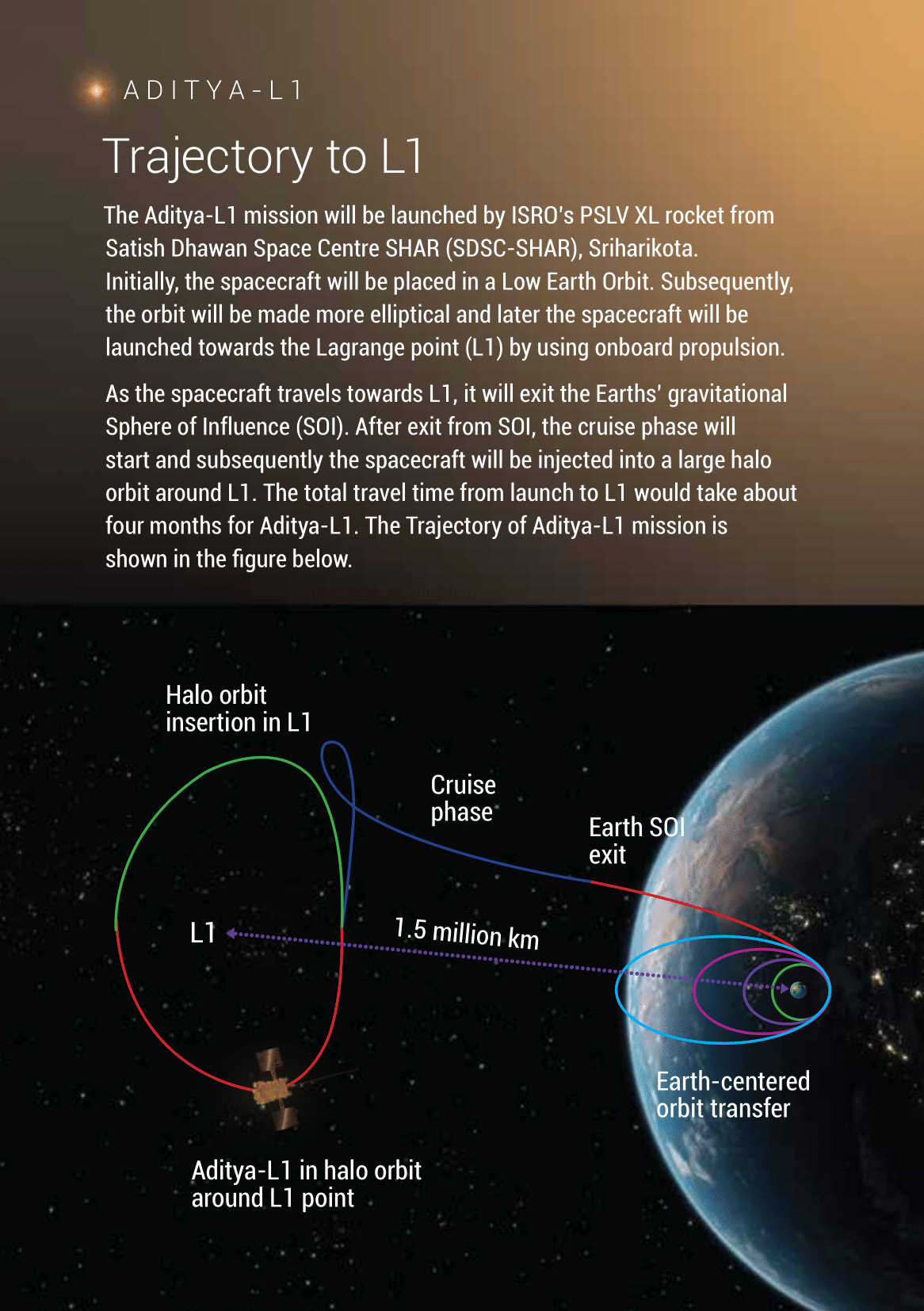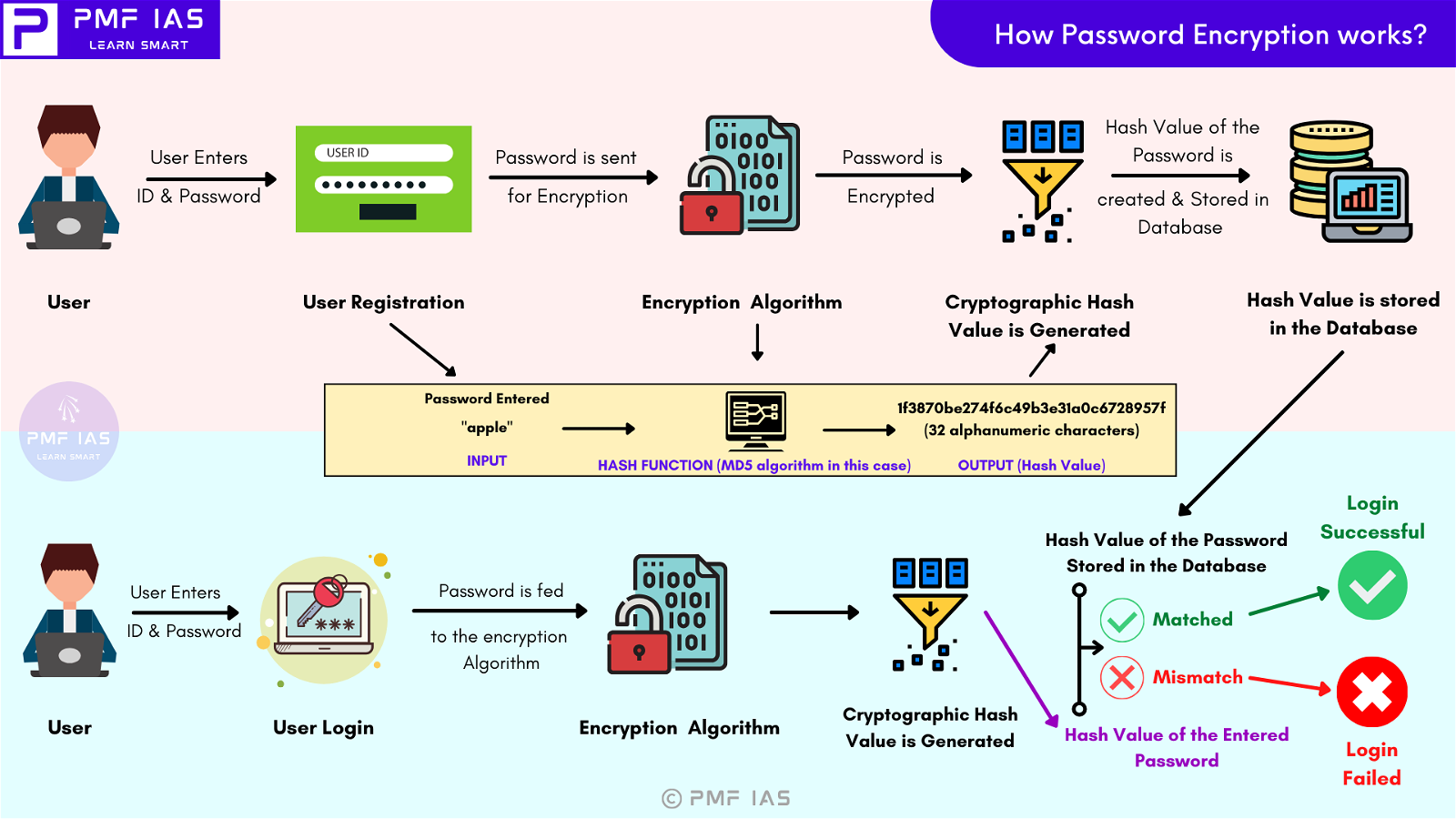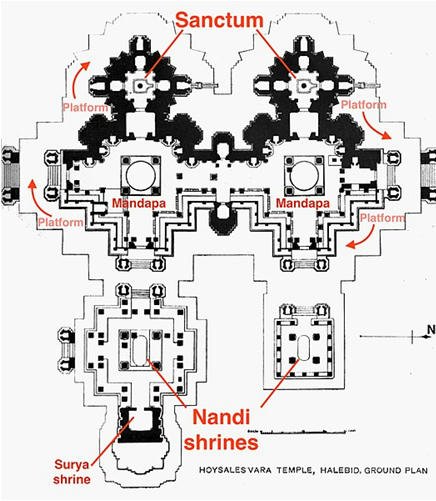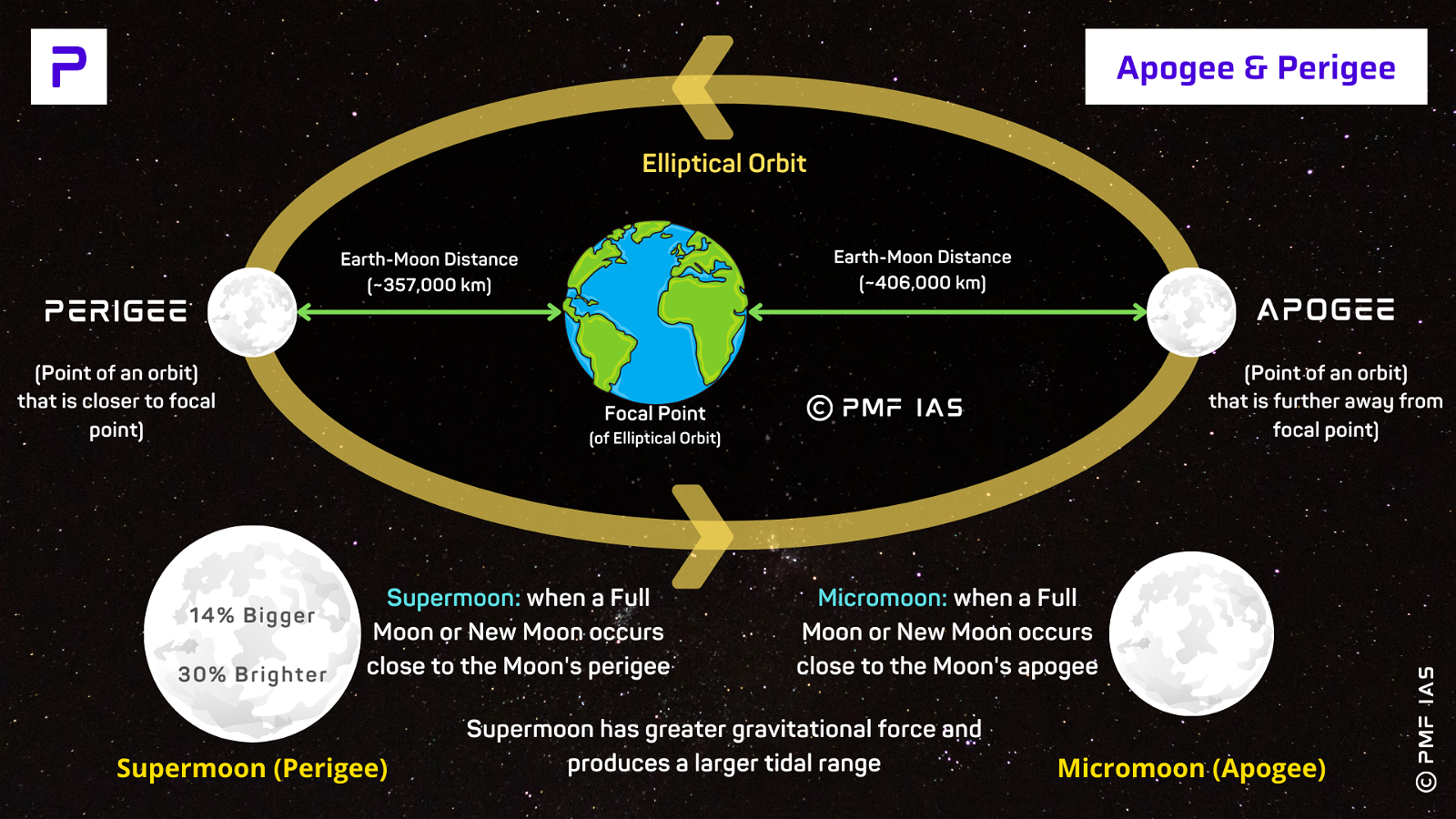
Current Affairs September 08, 2023: Sanatan Dharma Row, ASEAN, Multi-Purpose Seaweed Park (Tamil Nadu), Amended FCA and the NE, UPI ATM
Subscribers of "Current Affairs" course can Download Daily Current Affairs in PDF/DOC
Subscribe to Never Miss an Important Update! Assured Discounts on New Products!
Must Join PMF IAS Telegram Channel & PMF IAS History Telegram Channel
{GS1 – Indian Society – 2023/09/08} Sanatan Dharma Row
- Context (IE | IE | DH | IE): Political controversy has started after controversial statements of DMK leader Udhayanidhi Stalin on Sanatan Dharma.
- He blamed Sanatan Dharma for the caste-based atrocities in Indian society.
Etymology and Roots of Sanatan Dharma
- Sanatan Dharma is a Sanskrit term that can be translated as ‘eternal religion or eternal law’, ‘unshakeable, venerable order’, or ‘ancient and continuing guideline’.
- The word Sanatan dharma is not mentioned in the Vedas. It was first used in the Bhagwat Gita.
- The term is used by Hindus, Jains, and Buddhists, the religions that believe in rebirth.
- It is not used by Judaism, Christianity, and Islam, which believe in one life.
|
Roots of the Word ‘Sanatan’ in Pali Language
|
Sanatan Dharma in the 19th Century: When it Became a Synonym for Hinduism
- Sanatan Dharma in the 19th century gained popularity as a signifier of Hindu orthodoxy.
- This was a reaction against the reform movements such as the Brahmo Samaj and Arya Samaj.
- These reforms were opposed by traditionalists, and various sabhas promoting Sanatan dharma emerged. These sabhas, however, did not have a common doctrine.
- The only thing common among them was their opposition to reform movements.
- However, since then, the word ‘Sanatan Dharma’ has become synonymous with Hinduism.
Caste System in India
- The caste system has been followed in India since ancient times.
- There is mention of the fourfold varna (caste) system in the Rig Veda.
- Initially, this system was based on profession, and later, it became based on birth.
- With the growing rigidity, the caste system became a tool for the suppression of lower castes.
| Caste | Occupation |
| Brahmins | Priests, Teachers |
| Kshatriyas | Rulers, Warriors |
| Vaishyas | Merchants |
| Sudras | Servants |
Evils of the Caste System
- Discrimination: People from lower castes are often discriminated against regarding education, employment, housing, and healthcare.
- Poverty: Lower castes are often denied opportunities, and they are more likely to live in poverty.
- Untouchability: It is the practice of discriminating against people who are considered impure. Dalits, the lowest caste in the caste system, are often subjected to untouchability. They are forced to live in segregated areas and are denied access to public places and services.
- Social exclusion: The caste system excludes people from lower castes from participating in mainstream society. They may be denied access to public places like temples and water wells.
- Psychological trauma: The caste system causes psychological trauma to people from lower castes. They often have low self-esteem because of the discrimination they face.
- Caste-based Violence: It includes acts like verbal abuse, physical abuse, and mental abuse that are often faced by lower castes.
- Manual scavenging: Manual scavenging, i.e., removal of untreated human excreta from toilets, was made into a caste-based profession.
- Prohibition of Employment as Manual Scavengers and their Rehabilitation Act, 2013 (MS Act 2013) formally ended this.
Caste System Across Religions
- Though the caste system is exclusively attributed to Hinduism, other religions also practice it.
- Caste-based discrimination is also practised in Christianity, Islam, and Sikhism.
Dravida Munnetra Kazhagam (DMK) and its Anti-Caste Origin
- DMK, Tamil Nadu’s ruling party, has its roots in the Self-Respect Movement.
Self-Respect Movement and How Tamil Nadu’s Political Parties Emerge Out of It
- EV Ramaswamy ‘Periyar’, the founder of the Self-Respect Movement (1925), was strongly anti-caste & anti-religion in his outlook. He advocated major social reforms related to caste and gender.
- He opposed the domination of Hindi, emphasising the distinct cultural identity of the Tamil nation.
- In 1938, the Justice Party (which Periyar was a member of) and the Self-Respect Movement came together. In 1944, the new outfit was named Dravidar Kazhagam (DK).
- DK was anti-Brahmin, anti-Congress, and anti-Aryan (the idea of a superior race) and launched a movement for an independent Dravida nation.
- Post-independence, Periyar refused to contest elections. In 1949, one of Periyar’s aides, CN Annadurai, split from him due to ideological differences. He formed DMK & joined the electoral process.
- The party’s platforms were social democracy and Tamil cultural nationalism.
- In 1969, following the death of Annadurai, M Karunanidhi took control of DMK.
- In 1972, differences between him and actor-politician M G Ramachandran led to a split in the party. MGR formed the AIADMK.
Periyar’s View on Hinduism
- Periyar opposed Hinduism, and he argued that Hinduism propagated caste-based discrimination.
- He believed privileged sections used religion to suppress the marginalised section.
- He altogether did not believe in religion and advocated atheism.
{GS2 – IR – Groupings – 2023/09/08} African Union
- Context (TH): The African Union (AU) is set to join the G-20, according to sources.
- Both Russia and China supported the inclusion of AU.
- If it joins, it will be the second regional body after the European Union in G20.
- The inclusion of AU would bring the Global South’s ambitions to the economic grouping.
|
- The AU is a continental body representing all African countries (55 member states).
- It was officially launched in 2002 as a successor to the Organisation of African Unity (1963-1999).
- Mali, Sudan, and Guinea were suspended in 2021, and Burkina Faso was suspended in 2022 after the military took power.
India: A Voice of the Global South
- When India assumed the G20 presidency, the Global South was one of the visions.
- India advocated for adding the African Union as a full member of the G20.
- In BRICS, India supported the expansion of BRICS and included countries from the Global South.
- In January 2023, India hosted a Voice of Global South Summit.
- Throughout India’s G20 presidency, India shares a vision of being the voice of the Global South.
Voice of Global South Summit
- In January 2023, India hosted a special virtual Summit called the Voice of Global South Summit.
- The theme was – ‘Unity of voice, Unity of purpose’.
- It was aimed to bring together countries of the Global South and share their perspectives and priorities on a common platform.
- 125 countries participated in the Summit. It includes countries from Latin America, the Caribbean, Africa, Asia, Oceania, and Europe.
{GS2 – IR – Groupings – 2023/09/08} ASEAN
- Context (TH): PM Modi arrived in Indonesia to attend the 20th ASEAN-India summit and 18th East Asia summits.
- The ASEAN-India Summit is a diplomatic meeting between the member states of the Association of Southeast Asian Nations (ASEAN) and India.
- It is typically held as part of the ASEAN Summit meetings.
Association of Southeast Asian Nations (ASEAN)
- It is a regional group of ten countries that promotes economic, political, and security cooperation.
- India is not a member of ASEAN.
Evolution of ASEAN
- It was established in 1967 in Bangkok (Thailand) with the signing of the ASEAN Declaration (Bangkok Declaration).
- It has its secretariat in Jakarta, Indonesia.
- Indonesia, Malaysia, Philippines, Singapore, and Thailand are the founding members of ASEAN.
- It has ten member countries. Other members are Myanmar, Laos, Cambodia, Vietnam, and Brunei.

Leadership
- ASEAN’s leadership rotates annually based on the alphabetical order of the English names of the member states.
- A member state at the helm chairs the ASEAN summit.
- Myanmar was scheduled to take over the leadership in 2026.
- Recently, the ASEAN leaders have decided not to give the leadership of this bloc to Myanmar.
- The Philippines agreed to take over the regional bloc’s chairmanship in 2026.
|
ASEAN Summit
- It is the highest policy-making body in ASEAN comprising the Heads of State.
- As per regular practice, the ASEAN Summit is held twice annually.
- The first ASEAN Summit was held in Bali, Indonesia on 23-24 February 1976.
ASEAN-India Summit 2023
- PM Modi presented a 12-point proposal to expand cooperation between India and the ASEAN at the annual ASEAN-India Summit 2023.
- It proposed a ‘multi-modal connectivity and economic corridor’ linking Southeast Asia (SEA), India, West Asia, and Europe.
- The proposal resembles China’s Belt and Road Initiative (BRI).
India’s connectivity projects
|
Regional Comprehensive Economic Partnership (RCEP)
Conscience (Ethics)
|
The tough stance by ASEAN against the junta in Myanmar
- The ASEAN has strongly condemned the violence and urged the armed forces to stop targeted attacks on civilians.
Five-Point Consensus
- In 2021, ASEAN and Myanmar’s junta reached a five-point consensus.
- It aimed at addressing the post-coup crisis in the country.
- Under this plan, the junta promised to stop the violence and start inclusive political dialogue.
- The junta has continued violating the consensus.
Five points
|
East Asia Summit (EAS)
- It is the Indo-Pacific’s forum for strategic dialogue.
- It is the only leader-led forum at which all key Indo-Pacific partners meet to discuss political, security, and economic challenges.
- The first EAS was held in Kuala Lumpur in 2005.
- The EAS has 18 members:
- Ten ASEAN countries
- Eight other countries: China, India, Russia, United States, Australia, Japan, New Zealand, Republic of Korea (South Korea)
Act East policy
- It was announced by PM Modi in 2014.
- It is a successor to the Look East policy.
- It focuses on the extended neighbourhood in the Asia-Pacific region.
- The objective is to promote economic cooperation and cultural ties and develop strategic relationships with countries in the Asia-Pacific region.
- It has emphasised India-ASEAN cooperation.
|
New Cold War
- Indonesia warned the US, China, and Russia against sharpening rivalries.
- Indonesia asked them to manage differences to avoid a “New Cold War“.
Reasons for rising rivalries
- Russia’s invasion of Ukraine
- Maritime challenges in the South and East China Seas
- North Korean missile programmes
- Taiwan‘s ties with other countries
{GS2 – MoD – Schemes – 2023/09/08} Project Naman
- Context (IT): Project Naman is a new initiative by the Indian Army to provide facilitation and grievance redressal centres for veterans and the kin of personnel who have lost their lives.
- Naman will house a Common Service Centre, which will provide a wide range of services to veterans and their relatives, including:
- Pension related services
- Medical services
- Education and employment assistance
- Grievance Redressal
- Naman will also facilitate updating pensioners’ accounts on the SPARSH portal.
- The SPARSH portal is implemented by the Ministry of Defence (MoD) to meet the pension sanction and disbursement requirements for the Armed Forces. Army, Navy, Air Force and Defence Civilians.
{GS2 – MoE – Schemes – 2023/09/08} Malaviya Mission
- Context (PIB): The Malaviya Mission is a teacher training programme launched by the University Grants Commission (UGC) in collaboration with the Ministry of Education.
- The mission aims to provide tailored training programmes for teachers in higher educational institutions (HEIs) to improve the quality of education.
- The programme will be implemented through 111 Malaviya Mission centres across India.
- The programme will be delivered blended, with both online and offline components.
Madan Mohan Malaviya
- Madan Mohan Malaviya was born on 25 December 1861 in Prayagraj, UP, into a Hindu Brahmin family of Sanskrit scholars.
- He graduated from Muir Central College, Allahabad, in 1884 and became a teacher and a journalist.
- He joined the Indian National Congress in 1886 and became its president four times.
- He also founded the Hindu Mahasabha, a Hindu nationalist organization, in 1906.
- He was a member of the Imperial Legislative Council from 1909 to 1920 and participated in debates on various issues related to education, labour, and railways.
- He founded a highly influential English newspaper called “The Leader”.
- He was the principal founder of the Banaras Hindu University in Varanasi in 1916, which is one of the largest universities in India. He served as its vice-chancellor from 1919 to 1938.
- He was a gifted orator, a scholar of Sanskrit and Hindu scriptures, and a champion of Hindu culture.
- He was posthumously awarded the Bharat Ratna, India’s highest civilian honour, in 2014.
{GS3 – Envi – Conservation – 2023/09/08} Multi-Purpose Seaweed Park (Tamil Nadu)
- Context (PIB I TH): During Sagar Parikrama Phase VIII, the Ministry of Fisheries, Animal Husbandry & Dairying laid the Foundation Stone for a Multi-Purpose Seaweed Park in Tamil Nadu.
- The park aims to promote seaweed cultivation for employment and conservation.
Sagar Parikrama Yatra
- Sagar Parikrama Yatra aims to raise awareness about sustainable marine resource use and promote schemes for coastal communities.
- It emphasizes a balance between marine resource use for food security and livelihoods.
About Seaweeds
- Seaweeds are a type of marine algae often found in coastal waters. They can vary in size and colour and are used in various industries, including food, cosmetics, and agriculture.
- Seaweed is rich in nutrients and has diverse applications worldwide.
- Seaweed is the common name for countless species of marine plants & algae that grow in the ocean as well as in rivers, lakes, & other water bodies.
- They are macrophytic, which means they live in water or moist land surfaces.
- They generally grow in the shallow waters in the tidal zone.
- Some seaweeds are microscopic, such as phytoplankton that live suspended in the water column.
- Some are enormous, like the giant kelp that grow in abundance from their roots at the bottom.
- Seaweeds exhibit the highest photosynthesis efficiency due to moist conditions.
- They contribute to about 50% of all photosynthesis in the world.
Commercial Significance of Seaweeds
- Seaweed is full of vitamins, minerals, & fibre.
- Many seaweeds contain anti-inflammatory & anti-microbial agents.
- They are known to process significant medicinal effects.
- Certain seaweeds possess powerful cancer-fighting agents.
- They are effective binding agents (emulsifiers) & are used commercial goods as toothpaste & fruit jelly, & popular softeners (emollients) in organic cosmetics & skin-care products.
Why Seaweed Farming?
- Provide occupation for the coastal people.
- Provide continuous supply of raw materials for seaweed-based industry.
- It is a major tool to treat coastal pollution in the sea & reduce CO2 in global warming.
Seaweed Cultivation: Potential in India
- India is among the 12 mega-biodiversity nations in the world.
- India has an Exclusive Economic Zone (EEZ) of 2.17 million km2.
- The Indian coastline, with its different coastal ecosystems, supports the luxuriant growth of diverse seaweed populations, having considerable economic importance.
- About 844 seaweed species are reported from India, which has a coastline of 7,500 km.
- These resources have great potential for developing seaweed-based industries in India.

Challenges to seaweed harvesting in India
- Labour shortages during the paddy harvesting & transplanting season.
- Lack of livelihood security due to low wages & during bad weather.
- Lack of technology to improve processed products.
- Lack of information on new & alternative sources of raw material.
- Risky as they must be collected from depths of more than 25 to 30 feet to collect seaweed.
- While India has a rich source of seaweed varieties, we have focused only on harvesting, not cultivation, thus leading to over-exploitation.
- Lack of awareness about health benefits hinders nutrition transition among the population.
- Less market demand.
{GS3 – Envi – Laws – 2023/09/08} Amended FCA and the NE
- Context (TH | TH ): The Mizoram Assembly passed a resolution opposing the Forest (Conservation) Amendment Act (FCA), 2023, “to protect the rights of the people of Mizoram”.
What are the Concerns of Northeast Against Amended FCA?
Land Exempted from FCA Clearance
- The amended FCA allows the diversion of forest land for strategic projects of national importance and security within 100 km of India’s international borders without a forest clearance under the Forest (Conservation) Act (FCA) 1980. Most of India’s Northeast falls in this 100 km range.
Land Deprived of FCA Protection
- The amended FCA protects only notified forests:
- Land notified as a forest under the Indian Forest Act, 1927, or under any other law, or
- Land not covered in the first category but notified as a forest on or after 25 October 1980 in a government record. (FCA 1980 came into effect on 25 October 1980).
- This goes against the SC judgment in the Godavarman Case (1996), which says FCA will apply beyond ‘notified forests’ to all areas ‘recorded’ as forests in government records irrespective of ownership. Thus, this judgment brought unclassed forests under the purview of FCA.
- More than 50% of the Northeast is Recorded Forest Area (RFA). Of this, 53% are unclassed forests controlled by individuals, clans, and village councils according to customary law and procedures.
|
NE State |
Recorded Forest Area (in %) |
Unclassed Forests (in %) |
| Arunachal Pradesh |
62 |
– |
| Assam |
34 |
33 |
| Manipur |
78 |
76 |
| Meghalaya |
42 |
88 |
| Mizoram |
35 |
15 |
| Nagaland |
53 |
97 |
| Tripura |
60 |
42 |
| Sikkim |
82 |
0 |
|
Is FCA applicable to the Northeast?
- Special constitutional protections, such as Article 371A for Nagaland and Article 371G for Mizoram, prohibit the application of any law enacted by Parliament that impinges:
- On Naga and Mizo customary law and procedure
- Ownership and transfer of land and its resources
- Such laws can be extended only if their Legislative Assemblies decide so through a resolution.
|
Article |
Added by |
| Article 371A | 13th Amendment Act, 1962 (it created the State of Nagaland) |
| Article 371G | 53rd Amendment Act, 1986 (it created the State of Mizoram) |
Nagaland
- In 1986, Nagaland extended the application of the FCA to government forests. However, in 1997, the Home Ministry confirmed that the FCA did not apply to Nagaland.
- Later, in 1998, the MoEF informed the Nagaland government that FCA applies to the State.
- Nevertheless, since 1980, the MoEFCC has not granted an FCA clearance to forests in Nagaland.
Mizoram
- In 1986, the UT of Mizoram became a State with the 53rd Amendment of the Constitution.
- It stipulated that all Central Acts in force before 1986 are extended to the State, including the FCA.
- Moreover, the powers of the Autonomous District Councils in the Sixth Schedule areas in Mizoram do not extend to reserved forests. So, the FCA covers 85% of forest areas that are notified forests.
Rest of Northeast India
- FCA applies to the rest of the Northeast, including the Sixth Schedule areas of Assam, Meghalaya, and Tripura.
|
Forest Rights Act in Northeast
- In the Scheduled Tribes and Other Traditional Forest Dwellers (Recognition of Forest Rights) Act (FRA) 2006, “forest land” includes unclassified forests, un-demarcated forests, existing or deemed forests, protected forests, reserved forests, Sanctuaries, and National Parks.
- This complied with the 1996 Supreme Court redefinition of forest.
- However, none of the Northeast States have implemented FRA except for Assam and Tripura.
- Reasons why FRA is being ‘irrelevant’ in the Northeast:
- Communities, clans, etc., own most forest lands and already enjoy the rights.
- A lack of forest-dwellers who are totally forest-dependent.
{GS3 – IE – Banking – 2023/09/08} UPI ATM
- The UPI ATM has been unveiled as a White Label ATM in collaboration with the National Payments Corporation of India (NPCI).
- The UPI ATM offers cardless cash withdrawals, eliminating the need to carry physical cards.
- The ATM allows users to obtain cash from multiple accounts using the UPI app.
- White Label ATMs are operated by non-banking entities, so they will not only drive inclusivity but also serve where traditional banking infrastructure and penetration of cards is limited.
- UPI ATM is seen as a positive measure towards preventing issues such as card skimming.
Types of ATMs in India based on their ownership and operationWhite Label ATMs
Brown Label ATMs
Black Label ATMs
|
UPI ATM Vs Card less cash withdrawals
- Currently, the card-less mode of cash withdrawals is dependent on mobile numbers and OTPs.
- With UPI-ATM the transaction is carried out using QR codes that can be scanned using UPI applications installed on Android or iOS devices.
{GS3 – IE – Taxes – Indirect – 2023/09/08} Service Charges in Restaurants/Hotels
- Context (TH I IE I IE): The Delhi HC has directed members of the Federation of Hotel and Restaurant Association of India (FHRAI) to replace the term ‘service charge’ with ‘staff contribution’.
Service Charge
- A service charge is a fee charged to customers by restaurants and hotels for the service provided.
- It is typically 10% of the food bill.
- The service charge is supposed to be optional, but many restaurants automatically add it to the bill.
CCPA Guidelines On Service Charge
- The Central Consumer Protection Authority (CCPA) issued guidelines in response to complaints from consumer organizations that the levying of service charges was unfair and restrictive trade practice.
- Consumer organizations argued that the service charge is not a mandatory charge and that it is imposed on consumers without their consent.
- They also argued that the service charge is often used by restaurants to increase their profits, rather than to pay the staff and workers.
CCPA Guidelines
- The CCPA agreed with the consumer organizations and issued guidelines that prohibit restaurants from automatically adding service charges to the bill.
- The guidelines state that the service charge should be voluntary and that consumers should be given the option to pay it or not.
- If the restaurant refuses to remove the service charge, the consumer can complain to the National Consumer Helpline (NCH) or the Consumer Commission or through the e-Daakhil portal.
|
Delhi HC order on Service Charge in Restaurants/Hotels
- The Federation of Hotel and Restaurant Association (FHRAI) challenged the CCPA Order in Delhi HC.
- Delhi HC directs the FHRAI to replace service charges with staff contributions.
- The HC also directed that such an amount should not exceed 10% of the total bill (excluding GST).
- The restaurants will now have to specify on their menus in bold that tips need not be given after staff contribution is paid.





![PMF IAS Environment for UPSC 2022-23 [paperback] PMF IAS [Nov 30, 2021]…](https://pmfias.b-cdn.net/wp-content/uploads/2024/04/pmfiasenvironmentforupsc2022-23paperbackpmfiasnov302021.jpg)
